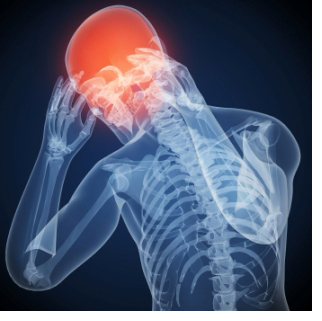 Have you woken up with a new ache, pain, or symptom? If so, block threats and welcome healers.
Have you woken up with a new ache, pain, or symptom? If so, block threats and welcome healers.
As for new pains, do you get headaches? Well, I’ve been slapped with brain pains. Stabbing pains that move from one side of my head to the other. Before this, I’ve rarely had headaches. Once when a friend’s child had a brain tumor erupt, I came down with serious headaches. My friend called them sympathy pains. But I’ve had next to nothing until now.
Today at Walmart, I felt the need to alert staff that I had brain pain, just in case I collapsed. And then I called my doctor to see if I should visit her within the next twenty-four hours. My brain feels eerily tight all the time.
Headaches and brain pains are not normal, according to author Dr. Amen. So, us headache sufferers needlessly endure pain. Instead, we should take action: eliminate threats and welcome healers. After all, we can build a better brain—grow new brain cells—at any age through a process called neurogenesis, according to author Brant Cortright. He claims that “the brain keeps growing new brain cells your entire life. [This] process of neurogenesis is how the brain upgrades itself and enhances your quality of life” (location 126 of 593, 21%).
So, for brain pain, “exercise, diet, and brain activities all show great preventive promise” (Stillman & Safaii-Waite, 2017). Exercise especially “increase[s] the production of new brain cells” (Cortright, 2015, location 228 of 593, 38%). So, aim to exercise at least five hours a week. I train seven hours a week with two rest days.
Exercise your brain, too. Do brain activities like reading and writing, but also seek out visually stimulating environments: “Giving mice an ‘enriched environment’ increased neurogenesis by four or five times” (Cortright, 2015, location 210 of 593, 35%). Even better, “when this enriched environment began in middle age, there was a five-fold increase in the rate of neurogenesis and when it began in old age there was a three- to five-fold increase” (Cortright, 2015, location 228 of 593, 38%). So, seek the bustle and beauty of museums, malls, and busy places.
For head pains, try ice-cold showers: nothing relieves the skull like freeze. For me, ice-cold showers are neurohealthy: “Broadly speaking we can call anything that nourishes the brain and increases neurogenesis neurohealthy, whereas those things that hurt the brain and decrease neurogenesis can be considered neurotoxic” (Cortright, 2015, location 175 of 593, 29%).
Also, for healing the brain, focus on diet. After all, “the decay in quality of life, memory, and emotional resilience usually associated with aging is really only a side effect of a neurotoxic lifestyle and diet” (Cortright, 2015, location 194 of 593, 33%). Your brain thrives when fed Omega-3 fatty acids and antioxidants.
So, eat omega-3 rich flaxseed, walnuts, and wild salmon. I’ve noticed these foods boost my mood and brain power. But keep your ratio of Omega-3s to Omega-6s in the stable range of 1:4. Better yet, a 1:1 ratio of Omega-3s to Omega-6s delays aging, according to experts (Bulletproof, n.d.).
As for another healer, eat antioxidant-rich dark chocolate. When fed dark chocolate, the brain may stop throbbing and the tongue surely starts drooling. Dark chocolate treats brains and bellies.
Also, eat blueberries daily to ease brain pain. Like dark chocolate, blueberries brim with antioxidants, and antioxidants combat inflammation. No-one wants an inflamed brain. Turmeric offers antioxidants, too. So, drink hot water sprinkled with turmeric and black pepper several times a day. Pretend it’s a latte.
I’ve noticed that all these treats bring brain relief. But what if your brain still aches? Well, then try the next step: elimination. In other words, cut out activities that unsettle the brain. Then gradually bring those activities back one-by-one. If the pain resurges, cross those activities off your daily to-do list.
So, here is a list of items to eliminate for headache relief:
First cut out all added sugars, trans fats, and fast foods. These foods cause inflammation and can lead to disease. Next, figure out the activities that started around the time your head pains began. Cut out those activities.
For instance, I began steam baths around the time my brain pains began. Steams help headaches, but in my case, they worsened the pain. Since cutting out steams, my brain pain has subsided.
Also, I bought a scented laundry detergent during the time the brain pain began. The scent of the detergent sickened me. So, I’ve since bought a different brand. That lessened the pain, too.
As yet another example, I started doing Wim Hof meditation around the time the brain began to ache. While meditation heals the brain, I need to test whether the Wim Hof helps or hurts. After all, what works for most may not work for you or me.
As for long term habits, minimize use of your cell phone. But you (like me) might refuse to give up the cell phone. From my phone, I read e-books and watch Amazon Prime health documentaries. Without the cell, life just wouldn’t be the same.
But a friend of mine died of brain cancer. She was super athletic and ran a successful company. And she drove an electric car. According to Dr. Mercola, research is surfacing on cell phones’ link to brain cancer. How much more electrified does the brain grow inside an electric vehicle? I’ll stick with a bicycle: sadly, an electric bike.
But so much more exists for nurturing the brain: “a holistic approach to developing the brain means engaging with life in all its dimensions—physical, emotional, mental, spiritual. Our personal growth and our brains’ growth are one” (Cortright, 2015, location 516 of 593, 87%).
So, grow your brain to ease pain.

